Related Research Articles

Solomon Islands is a sovereign state in the Melanesia subregion of Oceania in the western Pacific Ocean. This page is about the history of the nation state rather than the broader geographical area of the Solomon Islands archipelago, which covers both Solomon Islands and Bougainville Island, a province of Papua New Guinea. For the history of the archipelago not covered here refer to the former administration of the British Solomon Islands Protectorate, the North Solomon Islands and the History of Bougainville.

Munda is the largest settlement on the island of New Georgia in the Western Province of Solomon Islands, and consists of a number of villages. It is located at the southwestern tip of the western end of New Georgia, and the large Roviana Lagoon is just offshore.

Solomon Islands, also known simply as the Solomons, is a country consisting of six major islands and over 900 smaller islands in Melanesia, part of Oceania, to the northeast of Australia. It is directly adjacent to Papua New Guinea to the northwest, Australia to the southwest, New Caledonia and Vanuatu to the southeast, Fiji, Wallis and Futuna, and Tuvalu to the east, and Nauru and the Federated States of Micronesia to the north. It has a total area of 28,896 square kilometres, and a population of 734,887 according to the official estimates for mid 2023. Its capital, Honiara, is located on the largest island, Guadalcanal. The country takes its name from the wider area of the Solomon Islands archipelago, which is a collection of Melanesian islands that also includes the Autonomous Region of Bougainville, but excludes the Santa Cruz Islands.

New Georgia, with an area of 2,037 km2 (786 sq mi), is the largest of the islands in Western Province, Solomon Islands, and the 224th-largest island in the world. Since July 1978, the island has been part of the independent state of Solomon Islands.

The Russell Islands are two small islands, as well as several islets, of volcanic origin, in the Central Province of Solomon Islands. They are located approximately 48 kilometres northwest of Guadalcanal. The islands are partially covered in coconut plantations, and have a copra and oil factory at Yandina. Yandina also has basic services, including a store, post office, and airport.

South Sea Islanders, formerly referred to as Kanakas, are the Australian descendants of Pacific Islanders from more than 80 islands – including the Oceanian archipelagoes of the Solomon Islands, New Caledonia, Vanuatu, Fiji, the Gilbert Islands, and New Ireland – who were kidnapped or recruited between the mid to late 19th century as labourers in the sugarcane fields of Queensland. Some were kidnapped or tricked into long-term indentured service. At its height, the recruiting accounted for over half the adult male population of some islands.
Gavutu is a small islet in the Central Province of Solomon Islands, some 500 metres in length. It is one of the Nggela Islands.

The British Western Pacific Territories (BWPT) was a colonial entity created in 1877 for the administration of a series of Pacific islands in Oceania under a single representative of the British Crown, styled the High Commissioner for the Western Pacific. Except for Fiji and the Solomon Islands, most of these colonial possessions were relatively minor.
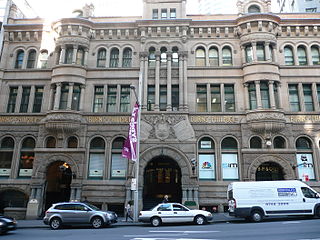
Burns Philp was a major Australian shipping line and merchant that operated in the South Pacific. When the well-populated islands around New Guinea were targeted for blackbirding in the 1880s, a new rush for labour from these islands began. James Burns and Robert Philp purchased several well-known blackbirding ships to quickly exploit the human resource in this region, and Burns Philp entered the slave trade. The company ended its involvement in blackbirding in 1886. In later years the company was a major player in the food manufacturing business. Since its delisting from the Australian Securities Exchange in December 2006 and the subsequent sale of its assets, the company has mainly become a cashed up shell company. It is wholly owned by Graeme Hart's Rank Group.

The British Solomon Islands Protectorate was first declared over the southern Solomon Islands in June 1893, when Captain Herbert Gibson of HMS Curacoa, declared the southern islands a British protectorate.

The North Solomon Islands form a geographical area covering the more northerly group of islands in the Solomon Islands archipelago and includes Bougainville and Buka Islands, Choiseul, Santa Isabel, the Shortland Islands and Ontong Java Atoll. In 1885 Germany declared a protectorate over these islands forming the German Solomon Islands Protectorate. With the exception of Bougainville and Buka, these were transferred to the British Solomon Islands Protectorate in 1900. Bougainville and Buka continued under German administration until the outset of World War I, when they were transferred to Australia, and after the war, were formally passed to Australian jurisdiction under a League of Nations mandate.
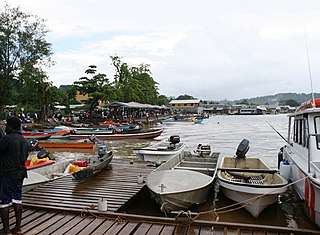
Gizo is the capital of the Western Province in Solomon Islands. With a population of 7,177, it is the third largest town in the country. It is situated on Ghizo Island approximately 380 kilometres west-northwest of the capital, Honiara, and is just southwest of the larger island of Kolombangara.
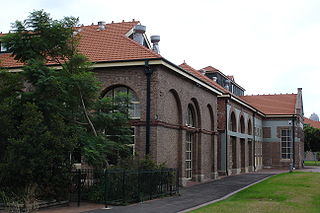
The Lever Brothers Factory was a soap factory in the suburb of Balmain in Sydney, Australia, which operated from 1895 until 1988. It employed many people from the local area and its large industrial buildings were a prominent feature of the landscape. Most of the site was demolished in 1996 to make way for an apartment complex, and only three of the original buildings remain.
The South Sea Evangelical Church (SSEC) is an evangelical, Pentecostal church in Solomon Islands. In total, 17% of the population of Solomon Islands adheres to the church, making it the third most common religious affiliation in the country behind the Anglican Church of Melanesia and the Roman Catholic Church. The SSEC is particularly popular on Malaita, the most populous island, where 47% of its members live; there are also smaller populations in Honiara and elsewhere on Guadalcanal, on Makira, and in other provinces.
Charles Morris Woodford was a British naturalist and government minister active in the Solomon Islands. He became the first Resident Commissioner of the Solomon Islands Protectorate, serving from 1896 until 1915.
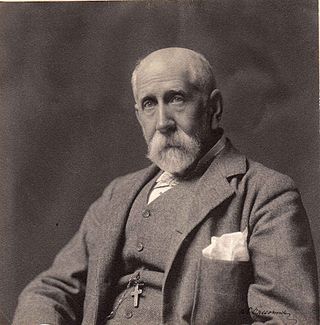
John T. Arundel was an English entrepreneur who was instrumental in the development of the mining of phosphate rock on the Pacific islands of Nauru and Banaba. Williams & Macdonald (1985) described J. T. Arundel as "a remarkable example of that mid-Victorian phenomenon, the upright, pious and adventurous Christian English businessman."

The high commissioner for the Western Pacific was the chief executive officer of the British Western Pacific Territories, a British colonial entity, which existed from 1877 until 1976. Numerous colonial possessions were attached to the Territories at different times, the most durable constituent colonies being Fiji and the Solomon Islands.
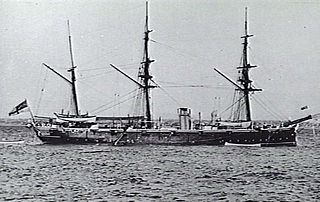
HMS Pylades was a Satellite-class composite screw sloop of the Royal Navy, built at Sheerness Dockyard and launched on 5 November 1884. She was later reclassified as a corvette and was the last corvette built for the Royal Navy until the Second World War.

SS Matunga was a 1,618-gross register ton passenger-cargo ship, built by Napier and Miller, Glasgow for Mersey Steamship Co., Liverpool and originally named Zweena. Purchased by Burns Philp & Co. Ltd in 1910 for the British Solomon Islands service. Burns Philp was operating seven plantations in the Solomon Islands through subsidiaries - the Solomon Islands Development Company, the Shortland Islands Plantation Ltd and Choiseul Plantations Ltd.
References
- ↑ "Levers Pacific Plantations Pty. LTD. - Corporate entry - Solomon Islands Encyclopaedia, 1893-1978".
- 1 2 3 4 Lawrence, David Russell (October 2014). "Chapter 9 The plantation economy" (PDF). The Naturalist and his "Beautiful Islands": Charles Morris Woodford in the Western Pacific. ANU Press. pp. 255 & 266-69. ISBN 9781925022032.
- ↑ Lawrence, David Russell (October 2014). "Chapter 9 The plantation economy" (PDF). The Naturalist and his "Beautiful Islands": Charles Morris Woodford in the Western Pacific. ANU Press. p. 265. ISBN 9781925022032.